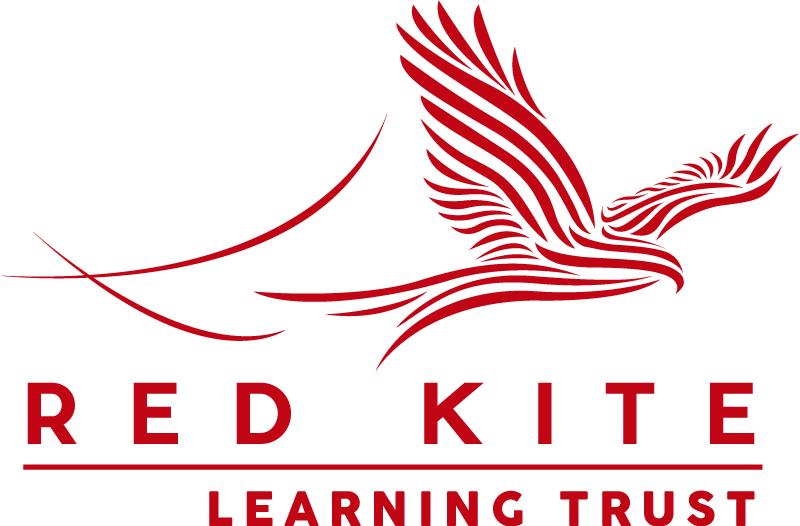Feedback
Purpose
The Rossett Feedback Policy intends to highlight to all stakeholders the standards and expectations for feedback on student work, and how feedback contributes to the school ethos of ‘Success for Everyone’. The policy also intends to make clear that written marking only forms part of the Rossett approach to feedback.
Aims/Principles/Rationale
Effective and frequent feedback is an entitlement to all students at Rossett. Regular feedback with student response is an essential aspect of ensuring ‘Success for Everyone’. Staff at Rossett should consistently draw upon evidence-informed strategies and approaches to best support students in their lessons. Feedback must improve subject-specific knowledge and skills as well as the Rossett 5Rs: respectful, responsible, ready, resilient and reflective as evidenced through quality DIRT with clear student responsibility for improvements.
Regular assessment and feedback will ensure teachers can make accurate professional judgements of students’ strengths and weaknesses and allows students to respond in a timely and effective manner; students and parents alike should have a clear understanding of academic progress and the learning journey as a result.
Expectations of Feedback:
- Students will receive regular feedback. Not every piece of work will receive written marking; instead, students should expect to receive deep written feedback on key identified pieces as indicated on subject assessment maps (see: Curriculum and Assessment Maps). The expected frequency will be commensurate with the amount of time allocated as part of the Rossett curriculum. In addition, to further develop the Rossett 5Rs and a growth mindset, a 5Rs judgment will also be given on all assessed pieces. A mark out of 5 will be awarded (5 being the highest, and 0 being the lowest) and will be given based on the teacher’s judgement of a student’s level of responsibility, resilience or reflectiveness shown in the piece (see Appendix B for full descriptors).
- Not all subjects use exercise books. Where this is the case, other forms of regular feedback will also be given such as verbal or recorded feedback; where deep written marking isn’t possible, students should still expect to receive other forms of regular detailed feedback in line with the above criteria. This, for example, will also apply to digital/ electronic methods of recording work and providing feedback.
- Where specification requirements do not permit detailed written marking on work (e.g. BTEC coursework, GCSE or A Level NEA etc), alternative permissible forms of feedback, conforming to examination requirements and regulations (see JCQ Regulations), should be used instead.
- In addition to the 5Rs judgement on each key assessed piece, any grading or levelling provided on a given piece of work must be in line with the school’s Assessment Policy (click here).
- In recognition of the different requirements at each Key Stage, subjects should indicate the regularity of different feedback and marking on subject assessment maps for each Key Stage. Research shows that setting arbitrary limits for written feedback does not always lead to effective progress. Instead, by allowing subjects to decide the key points of the curricula at which to assess and provide formal feedback, it leads to stronger progress.[1]
Consistent Approach
Feedback, which is provided by teacher to student, or student to student, must satisfy three core elements:
- Feedback must be meaningful: clear, timely, specific and linked to the success criteria; grades may be awarded where appropriate. Feedback must inform planning and reshape future teaching.
- Feedback must be manageable: teachers must be able to provide feedback and students and must be able to respond to it effectively in a timely manner.
- Feedback must be motivational. The STAR principle will apply: Strength, Target (teacher), Action, Reflection (student), student action and reflection to all feedback is reflected in subsequent DIRT. As part of the ‘Reflection’ stage, students must take ownership of updating their own trackers with the required information in their books following feedback.
Core Expectations for Feedback: Staff and Student Response
Further Requirements:
- Pieces selected for deep, written marking and feedback should allow students to demonstrate their own learning against clear success criteria and progression along the intended curriculum outcomes to provide clear evidence of the learning journey taking place; subjects must be consistent in their selection of assessed work based on this principle.
- Pride in Presentation of work should be encouraged and challenged where necessary (see Appendix A for the policy).
- Student trackers will be used in each subject to record target grades, academic progress against their targets including strengths and targets as given by the teacher. Students’ on-going 5Rs judgements will also need to be recorded.
- Subject specific (as well as general) literacy must be focussed upon. Before providing detailed feedback, teachers must build in time for students to check their work during COW Time (Check Our Work Time) so that careless mistakes (e.g. missing capitals or full stops) are identified. To ensure consistency of student experience, the Rossett Literacy Marking Codes must be used.
|
MARK : |
MEANS… |
|
Sp + underline* |
Try this spelling again. Refer to your spelling rules. * 3-5 spellings per piece. |
|
P |
Look for punctuation errors and correct them e.g. Full stops (.) apostrophes (’) exclamation marks (!) |
|
G |
Grammatical error e.g. an incomplete sentence. |
|
WW |
Wrong word e.g. being/been or their/there/they’re. Try and find and correct it. |
|
C |
Find the missing or misplaced capital letters and correct them.
|
|
// |
New paragraph; mark in where the paragraphs should be.
|
- Where coded marking is used students must either have reference to the codes or copy down the targets in green pen next to where the teacher has noted these.
Covid-19 Addendum: In-school and Remote Learning Feedback Policy Adjustments
This policy addendum is specifically intended to:
- Clarify expectations of feedback under adjusted health and safety and working conditions in school.
- Clarify expectations of feedback under a remote learning context.
* except in Tier 1 conditions where it is not possible to complete planned assessments in this way. Prior discussion and specific agreed compromise must be agreed with a subject’s SLT link where this is the case.
Remote Learning Changes
Providing timely and helpful feedback is a cornerstone of good teaching and learning, and whilst this may be more challenging with remote learning, teachers will endeavour to provide regular feedback to students on pieces of work that they are required to submit. Working remotely, all assessed work will be set via the Microsoft Teams ‘Assignment’ function, regardless of how students’ work is eventually submitted, with clear due dates given to students for completion, thereby helping students to organise their time.
Given the nature of the tasks, the type of feedback teachers can provide may not have the same format as marking an exercise book. Teachers are encouraged to ensure, when they set assessed work, that it is designed in such a way that the explained principles of feedback in the Feedback Policy can be adhered to when returning feedback to students.
In a similar way as when we are in school, not all pieces of work will be marked/assessed. Teachers guided by the Head of Subject will continue to provide detailed feedback on ‘key pieces’ as per the Feedback Policy. If working remotely, this schedule of key pieces (as identified on curriculum maps) may need to be modified to reflect the change in circumstances. Directors of Study and Subject Leaders will need to ensure that there is consistency of task type and feedback in any amendments made to the curriculum and assessment maps for remote learning.
Types of Feedback: Remote Learning
The Feedback Policy provides sufficient scope to be applied in an in-school or remote learning context. However, please find some more specific remote learning-based feedback suggestions:
- Providing feedback directly in the ‘Assignments’ function on Microsoft Teams.
- Providing whole class feedback rather than feedback on individual pieces of work – this is an effective way of providing feedback, supported by findings from educational research.
- Recording oral feedback and sharing an audio file/video with students via a link.
- Additional functionality is available in Teams if teachers want to create assignments that self-mark for students to complete.
In line with the principles of feedback as explained in the Feedback Policy, whatever the form of feedback provided to students, teachers should also expect students to complete DIRT tasks where they respond to teacher feedback. Where this work is done digitally, any corrections should still be clearly labelled as DIRT or corrections made in green (where practical).
Appendix A: Rossett School – Presentation of Work
Introduction:
At Rossett School we recognise that the visual appearance of work is important. Well-presented work evokes a positive response in the reader and promotes a sense of pride in the student’s own work. Students being able to express themselves in a fluent, extended and accurate way is one of the most important tools to succeed. A culture of well-presented work will foster an understanding of the importance in the world of work of accuracy and high-quality presentation. In addition, exercise books are the primary source of revision for students. They must be clearly laid out in order to be useful.
Our definition of best practice:
Student books are most effective when:
- The books are organised and presented well from the start, where teachers have insisted on high expectations and reinforced these throughout the year.
- Clearly laid out books are marked in line with the Marking Policy.
- On-going evidence within student books of feedback and student response to this feedback.
Expectations for students:
- All work will have a clear title with the date - both underlined using a ruler.
- All written work should be in blue or black ink.
- All diagrams, tables and drawings will be completed using pencil and ruler.
- All writing will be neat and as legible as possible.
- All sheets should be neatly stuck into exercise books in the correct chronological order.
- All errors will be crossed out neatly with one line. Correction fluid will not be used.
- DIRT/corrections in response to feedback should be in green.
- Pages should not be torn out of exercise books and there should be no graffiti either on or in books.
- If a student is absent from school, they are required to catch up on the work they have missed, using the resources provided by their teacher.
- All work should be valued and completed to the best of the student’s ability.
Expectations for teachers:
- All exercise books must have STUDENT NAME; SUBJECT; SUBJECT TEACHER; CLASS on the front cover.
- Exercise books must all have a progress sticker on the front cover.
- Inside the front cover, books should have a copy of the presentation expectations (see Appendix).
- Inside the back cover, books should have an assessment tracker sheet. Assessment trackers need to identify:
- the grades/marks students achieve in key assessment pieces.
- the ‘areas of strength’ in key assessment pieces.
- the ‘areas for improvement’ in key assessment pieces.
- the 5R grade (score out of 5)
- Teachers will facilitate the ‘catching up’ of any missed work due to absence by students.
Monitoring and Evaluation of this policy
- Faculty Post Holders, Directors of Study and senior leaders will monitor the implementation of the policy during lesson observations, work scrutinies and learning walks.
- The Teaching and Learning Committee of the governing body is responsible for this policy.
- Review date: every three years.
Appendix B: 5Rs Judgement Descriptors (Key Assessed Pieces Only)
As outlined in the above policy, a mark out of five will be given by the teacher on each key assessed piece (regardless of the method of feedback provided). This mark should be communicated clearly to the student and discussed where necessary in a follow-up discussion. Teachers should consider the impact of late submission of work (where set as home learning) when considering a 5Rs judgement on any piece of work completed.
5Rs judgements are not necessarily contingent on grade-level performance of a piece, but instead should be considered in relation to developing a growth mindset and the values of responsibility, resilience, and reflectiveness in a student’s approach to their work.
|
Judgement |
Descriptor |
|
X |
The student has not attempted/ completed the key assessed piece but has a valid reason. |
|
0 |
The student has not attempted the key assessed piece, does not have a valid reason, and has failed to complete as requested in catch-up. |
|
1 |
The student has completed the key assessed piece but does not demonstrate clear levels of responsibility, resilience and/or reflectiveness in the completion of the task. |
|
2 |
The student has completed the key assessed piece but only demonstrates limited levels of responsibility, resilience and/or reflectiveness in the completion of the task. |
|
3 |
The student has completed the key assessed piece and demonstrates an acceptable level of responsibility, resilience and/or reflectiveness in the completion of the task. |
|
4 |
The student has completed the key assessed piece and demonstrates a good level of responsibility, resilience and/or reflectiveness in the completion of the task. |
|
5 |
The student has completed the key assessed piece and demonstrates a high level of responsibility, resilience and/or reflectiveness in the completion of the task; there is clear evidence of going ‘above and beyond.’ |
[1] https://educationendowmentfoundation.org.uk/evidence-summaries/evidence-reviews/written-marking/




















